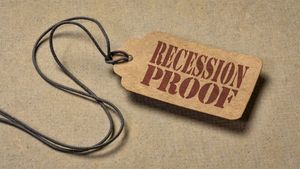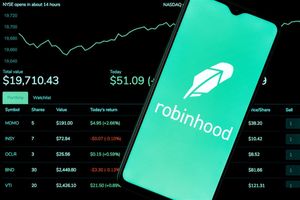
Amidst fluctuating economic indicators and persistent whispers of market volatility, a quiet but powerful force continues to underpin the stability of the U.S. financial landscape: homeowner equity. With American homeowners collectively holding near-record levels of wealth in their properties, this substantial equity acts as a critical bulwark, dramatically reducing the risk of widespread mortgage defaults and providing a vital buffer against potential downturns. While concerns about housing affordability and interest rates persist, the deep reserves of equity held by millions of households present a stark contrast to previous economic crises, offering a foundation of resilience for both the housing market and the broader economy.
This unprecedented level of homeowner wealth signifies more than just rising property values; it represents a fundamental shift in household financial security. As the economy navigates inflationary pressures and evolving interest rate environments, the robust equity position of homeowners translates into increased financial flexibility, reduced leverage, and a diminished likelihood of distress sales. This phenomenon is reshaping the market's immediate trajectory, fostering a sense of cautious optimism despite ongoing challenges.
The Deep Roots of Resilience: High Equity Levels and Their Profound Impact
The current state of homeowner equity in the U.S. is nothing short of remarkable. As of mid-2025, American homeowners are sitting on approximately $34.5 trillion in collective equity. The average mortgage-holding homeowner boasts an impressive $302,000 to $315,000 in accumulated home equity, a figure that dwarfs pre-Great Recession levels. Nearly half of all mortgaged residences, an estimated 46.2%, are considered "equity rich," meaning their outstanding loan balance is less than half the home's current value. This translates into approximately $11.5 trillion of "tappable" equity that homeowners could access while maintaining a healthy 20% equity stake.
This surge in equity has deep historical roots, largely a rebound and sustained growth trajectory since the dark days of the 2008 financial crisis. From a low of about $3.5 trillion in aggregate equity in 2010, the figure has skyrocketed. The COVID-19 pandemic, paradoxically, fueled an accelerated period of home price appreciation, adding an average of $124,000 in equity per owner compared to Q1 2020. This sustained growth has pushed the share of home equity to 72.7% of total real estate value for owner-occupied homes in Q2 2024, the highest level since the 1950s. This isn't merely about rising prices; it's also about new construction and a growing number of mortgage-free homes, particularly among an aging demographic.
The profound significance of these high equity levels lies primarily in their ability to prevent widespread defaults and foreclosures, a stark differentiator from the 2008 meltdown. Substantial equity acts as a crucial financial cushion, enabling homeowners to weather economic storms or personal financial setbacks. With significantly lower average loan-to-value (LTV) ratios – dropping from around 71% in 2010 to less than 44% in Q3 2022 – homeowners have more "skin in the game," drastically reducing the incentive for strategic defaults. Furthermore, faced with hardship, homeowners can leverage their equity through various means, such as selling the property, refinancing, or utilizing home equity loans or lines of credit (HELOCs) to avoid foreclosure. The historically low percentage of homes in negative equity, hovering around 2%, underscores this resilience, making a repeat of the 2008 foreclosure crisis highly improbable.
Beneficiaries and Those Facing Headwinds in an Equity-Rich Market
The landscape of high homeowner equity creates a distinct environment of winners and losers across various sectors, shaping the fortunes of public companies and influencing consumer behavior.
Among the clear beneficiaries are home improvement retailers. Companies like Home Depot (NYSE: HD) and Lowe's (NYSE: LOW) stand to gain significantly. With vast amounts of tappable equity, homeowners are more inclined to invest in renovating, remodeling, and upgrading their existing properties rather than selling and facing higher mortgage rates on a new purchase. This "lock-in" effect, driven by many homeowners holding ultra-low interest rates, translates into sustained demand for building materials, appliances, and design services, bolstering the revenues and profitability of these retail giants. Similarly, suppliers of construction materials, landscaping services, and home furnishing companies could see elevated demand.
Financial institutions with robust home equity lending divisions, such as large banks offering HELOCs and home equity loans, also find themselves in a favorable position. As cash-out refinances become less appealing due to elevated first mortgage rates, homeowners are increasingly turning to second liens to access their wealth without disturbing their primary mortgage. This shift provides a lucrative avenue for banks to generate interest income and loan origination fees, supporting their profitability in a competitive lending environment. Furthermore, the overall health of mortgage portfolios improves with higher equity, reducing default risk and stabilizing asset quality for lenders across the board.
Conversely, companies heavily reliant on a high volume of quick home transactions or those exposed to potential housing market cooling, while less likely to face catastrophic losses due to the equity buffer, might experience some headwinds. Real estate brokerages and platforms, while still active, could see slower growth in transaction volumes compared to boom periods, as the "lock-in effect" reduces housing inventory. Developers focused on new construction, while benefiting from general market stability, still grapple with high material costs, labor shortages, and rising interest rates for their own financing, potentially limiting the pace of new project commencements despite underlying demand. Companies that thrived on rapid housing turnover might need to adapt their business models to a market characterized by homeowners staying put longer.
Industry Shifts and Broader Economic Ripples
The profound levels of homeowner equity are not merely a footnote in financial reports; they are a central pillar influencing broader industry trends and generating significant ripple effects throughout the economy. This phenomenon fits squarely within a macro trend of wealth accumulation in real estate, diverging sharply from past cycles where housing busts led to widespread economic distress.
One significant ripple effect is on consumer spending. The "wealth effect" stemming from substantial home equity often encourages homeowners to feel more financially secure, leading to increased discretionary spending. This can manifest in everything from home renovations and large appliance purchases to vacations and other consumer goods, providing a tangible boost to retail and service industries. JPMorgan (NYSE: JPM) analysts, for example, predict a 3% price rise in 2025 partially driven by this enhanced consumer confidence. This sustained consumer activity, underpinned by housing wealth, contributes to overall economic resilience and can mitigate the impact of other economic slowdowns.
For the construction industry, while high equity insulates existing homeowners, it simultaneously contributes to the persistent issue of low housing inventory. The "lock-in effect," where homeowners are reluctant to sell their homes with ultra-low mortgage rates to purchase another at higher current rates, keeps existing housing stock off the market. This exacerbates supply shortages and contributes to ongoing affordability challenges for prospective buyers. While new construction remains necessary, developers face a complex market where high demand meets high costs, pushing the industry to innovate in areas like modular housing or more efficient construction methods.
From a regulatory and policy standpoint, the current equity levels offer a degree of comfort to policymakers, reducing immediate pressure for interventions aimed at preventing a housing crisis. However, the accompanying affordability crisis, driven by high prices and rates, remains a critical concern. Discussions around zoning reforms, incentives for affordable housing development, and first-time homebuyer assistance programs are likely to intensify. Historical precedents, particularly the contrast with the 2008 subprime mortgage crisis, highlight the immense value of strong underwriting standards and substantial homeowner equity in safeguarding the financial system from systemic risks. The current environment showcases the effectiveness of these lessons learned, even as new challenges emerge.
Navigating the Path Ahead: What Comes Next
The current state of robust homeowner equity sets the stage for a unique trajectory for the housing market and broader economy in the short and long term. While the foundation is solid, several dynamics will shape what comes next.
In the short term, the "lock-in effect" is expected to persist, keeping housing inventory tight and potentially moderating price declines, even in the face of elevated interest rates. This means continued, albeit possibly slower, home price appreciation in many markets, underpinned by the limited supply and resilient demand from financially secure homeowners. Home equity lending, particularly HELOCs and home equity loans, will likely remain a popular avenue for homeowners to access capital without disturbing their primary mortgages. Financial institutions will continue to innovate their offerings in this space to capture market share.
Long-term possibilities include a gradual normalization of inventory as market rates potentially stabilize or decline, eventually incentivizing more homeowners to move. However, the demographic shift towards an aging population with more mortgage-free homes or low-rate mortgages could mean that housing turnover remains below historical averages for some time. Strategic pivots will be required from various stakeholders: real estate agents may focus more on niche markets or client retention, while developers might prioritize build-to-rent projects or more attainable housing options.
Market opportunities will emerge for companies providing solutions that help homeowners maximize their current properties – from energy efficiency upgrades to smart home technology installations. The burgeoning senior housing market, driven by aging homeowners with significant equity, also presents a substantial opportunity. Conversely, challenges include sustained affordability pressures for first-time buyers and the potential for equity erosion if inflation outpaces property appreciation over an extended period, diminishing the real value of that wealth. Different scenarios could play out: a "soft landing" where equity gradually moderates while avoiding widespread defaults, or a more dynamic period if economic conditions shift significantly, testing the limits of this equity buffer.
A Resilient Foundation: The Lasting Impact of Homeowner Equity
In conclusion, the current high levels of homeowner equity stand as a powerful testament to the resilience of the U.S. housing market and a critical stabilizer for the broader economy. Far from the speculative excesses that characterized previous downturns, the vast wealth held in homes today provides an unprecedented buffer against financial shocks, dramatically reducing the specter of widespread defaults and foreclosures.
The key takeaway is that this equity acts as a financial bedrock, enabling homeowners to navigate personal economic challenges without being forced into distress sales. This stability, in turn, helps to temper market volatility and fosters a "wealth effect" that supports consumer spending and overall economic activity. While challenges such as housing affordability and low inventory persist, they are occurring within a framework of strong household balance sheets, fundamentally different from prior crises.
Moving forward, investors should closely watch several indicators: the trajectory of interest rates, which will influence both affordability and the "lock-in effect"; trends in home equity lending as a gauge of homeowner confidence and access to capital; and any shifts in unemployment rates that could test household financial resilience. The lasting impact of this equity-rich environment is a more stable, albeit perhaps slower-moving, housing market that will continue to be a cornerstone of American wealth for years to come.






